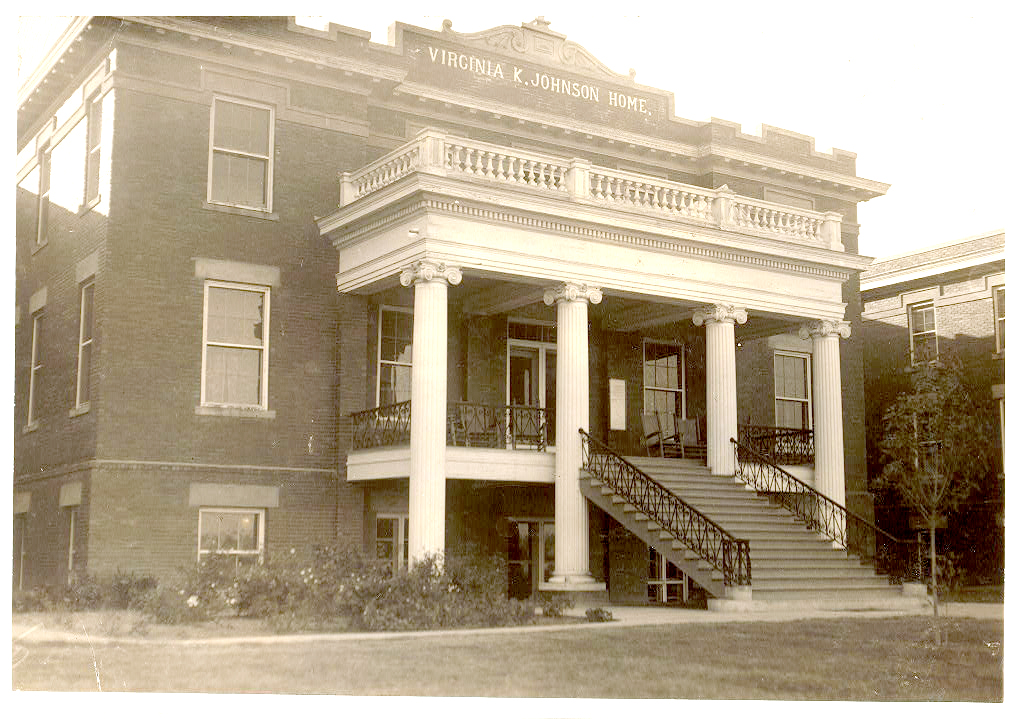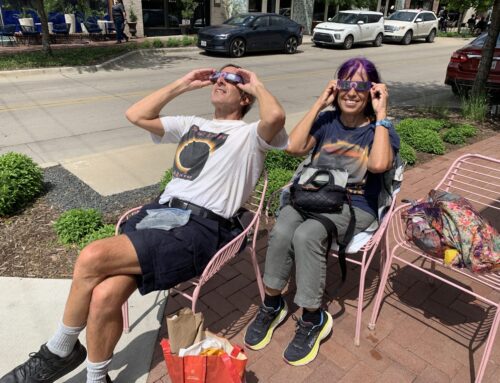
The Virginia K. Johnson Home was photographed by Lewis Hine as part of a collection of photos for the National Child Labor Committee. Photo courtesy of the Library of Congress.
In 1913, a photographer from Oshkosh, Wisconsin, found himself at 901 S. Madison Ave.
Before him stood a large, three-wing brick building with a grand staircase leading up to an entrance framed by thick white pillars. “Virginia K. Johnson Home” was written over the balcony in white letters.
The photographer was Lewis Hine, and his short stint in Oak Cliff was part of the 16 years he spent traveling the United States photographing child labor for the National Child Labor Committee.
Hine took two photos in Oak Cliff: one of the aforementioned home and the other of a girl named Leila Prater. Both pictures are in the collection now owned by the Library of Congress.
The Virginia K. Johnson house intrigued Hine for the refuge it offered North Texas women. His notes say that a large number of the women in the home had come to live there from surrounding farms.
“Their lives (were) stunted by the monotonous work of cotton picking,” Hine wrote.
While little is known about the photographed Leila Prater, Hine’s records show that before coming to the home, Prater had worked in a Georgia cotton mill “ever since I could remember.”
According to the Texas State Historical Association, Virginia Knight Johnson was a woman from Lynchburg, Virginia, who moved to Dallas in the 1880s. Her first venture into the Dallas philanthropic scene was in 1892, when she opened a home for young women at risk of resorting to prostitution.
In 1911, the home closed, but by that time Johnson had raised the money to purchase 18 acres of land in Oak Cliff and build the three-story structure Hine later photographed.
That became the Virginia K. Johnson Home and Training School.
The school was opened to over 200 girls who were required to stay on the campus for two years and were given a curriculum of general education, religious studies, typing, vocational training and homemaking.
The home became a landing pad for women in distress, with the Library of Congress records noting many unwed mothers under the age of 21 lived there.
SueAnn Wall Kosydar, a Kimball High School alumna, says her mother and aunts spent time in the home following the death of their mother because their father could not both work and care for them.
John Swindells was born in the home in 1938 and says he was adopted several months later.
Swindells was raised in Oak Cliff and graduated from Sunset High School in 1955.
In 1934, Johnson died; the home shut down in 1941 after a Texas law forbade the home’s two-year residential requirement.
After the home shut down, the land was acquired by the Bishop Joseph Patrick Lynch and was converted into the St. Joseph’s Home for Girls. Later, the campus became a Catholic youth center, and in the ’90s, the diocese decided to convert the site into a retreat center.
Today, the Saint Raphael Retreat Center stands on the plot of land that Virginia K. Johnson originally bought.
To this day, Johnson is one of the namesakes of Virginia-Snider Commons, a residential hall at Southern Methodist University.
While the home she built no longer stands, it is immortalized in the photo by Lewis Hine and is part of the photo collection that is considered a main catalyst behind the first child labor laws in America.





